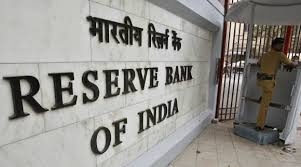 | « Back to article | Print this article |
The met department’s move stoked fear of a drought, which could fan inflation
 Despite the Reserve Bank of India cutting the repo rate by 25 basis points in its second bi-monthly monetary policy review of the year on Tuesday, the markets fell sharply due to the met department cutting its forecast for the monsoon this year to 88 per cent of the long-period average.
Despite the Reserve Bank of India cutting the repo rate by 25 basis points in its second bi-monthly monetary policy review of the year on Tuesday, the markets fell sharply due to the met department cutting its forecast for the monsoon this year to 88 per cent of the long-period average.
The met department’s move stoked fear of a drought, which could fan inflation.
The BSE Sensex and the National Stock Exchange’s Nifty bencmarks plunged to 27,146 and 8,226 in intra-day deals, before closing 2.4 per cent lower each, at 27,188 and 8,236, respectively.
Interest rate-sensitive stocks -- from the banking, automobile and real estate sectors -- were among the worst-hit. While the Bank
Nifty lost 3.5 per cent, the auto and realty indices slipped 2.7 per cent and four per cent, respectively.
“The benchmarks witnessed steep decline on Tuesday after RBI took a cautious stance on economic recovery, even as it cut the policy rate.
Adding to the pessimism was India Meteorological Department’s latest report on the monsoon, which indicated a delay and a downgraded forecast,” said Jayant Manglik, president (retail distribution), Religare Securities.
Outlook
“A conservative strategy would be to wait, especially for more certainty on both the monsoon and the effects of government responses if it turns out to be weak,” RBI said, while stressing the need for banks to pass on the sequence of rate cuts.
Ajay Bodke, head of investment strategy and advisory, Prabhudas Lilladher, believes though the rate cut is on expected lines, the commentary on inflation is a bit hawkish, which gives investors an impression that RBI might remain on a prolonged pause in terms of more rate cuts.
“A lot will depend on the monsoon and how it progresses through the next few months.
“A pick-up could keep inflation under check and help perk market sentiment. The upside for the Nifty seems to be capped at 8,500-8,600 for now,” he says.
The central bank highlighted an uptick in global crude oil prices, amid geopolitical concerns and slow global growth as some concerns.
It also raised its inflation forecast for January 2016.
Andrew Holland, chief executive of Ambit Investment Advisors, says: “There is nothing much for the markets to be excited about and I expect them to go down from
here.
“Now, there is no leadership in the index.
Going ahead, this leadership will not come from consumer goods companies. Information technology companies, too, have their own set of problems.
The pharma space isn’t exciting either.
Also, defensive sectors aren’t moving.
“However, if we had a 50-bps cut on Tuesday, bank stocks might have reacted positively and capital goods stocks would have moved.
“The markets are in a bit of a twilight zone and there are no catalysts or positive triggers for any sector.
“We’ll have to wait till the economy starts to recover.
“Global factors such as Greece and an interest rate decision by the US Federal Reserve could weigh on the sentiment,” he adds.
“For the past two weeks, we have been reiterating a negative view that sustainability seems difficult above 8,500 in the Nifty and resumption of a southward trend is likely.
"After Tuesday’s fall in the index, we believe this decline will extend further and the possibility of the Nifty testing 8,000 levels is quite high in the coming sessions,” says Manglik of Religare.